Monthly Updates on Recent Books in the History of Christianity
To raise awareness of recent books in the history of Christianity, the editorial staff of Church History: Studies in Christianity and Culture highlights each month a list of 10-15 books in diverse periods and geographical regions that we hope will be of interest to our members. We include here below the ninth monthly list, chosen by our staff, with excerpts from the publishers’ blurbs.
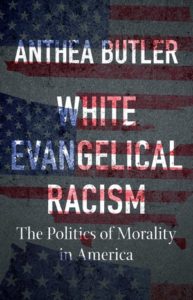
Anthea Butler, White Evangelical Racism: The Politics of Morality in America. 2021
University of North Carolina Press
The American political scene today is poisonously divided, and the vast majority of white evangelicals play a strikingly unified, powerful role in the disunion. These evangelicals raise a starkly consequential question for electoral politics: Why do they claim morality while supporting politicians who act immorally by most Christian measures? In this clear-eyed, hard-hitting chronicle of American religion and politics, Anthea Butler answers that racism is at the core of conservative evangelical activism and power.
Butler reveals how evangelical racism, propelled by the benefits of whiteness, has since the nation’s founding played a provocative role in severely fracturing the electorate. During the buildup to the Civil War, white evangelicals used scripture to defend slavery and nurture the Confederacy. During Reconstruction, they used it to deny the vote to newly emancipated blacks. In the twentieth century, they sided with segregationists in avidly opposing movements for racial equality and civil rights. Most recently, evangelicals supported the Tea Party, a Muslim ban, and border policies allowing family separation. White evangelicals today, cloaked in a vision of Christian patriarchy and nationhood, form a staunch voting bloc in support of white leadership. Evangelicalism’s racial history festers, splits America, and needs a reckoning now.
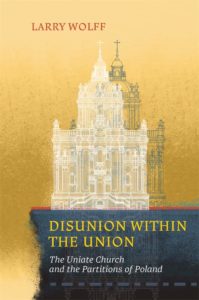
Larry Wolff, Disunion within the Union: The Uniate Church and the Partitions of Poland. 2020
Between 1772 and 1795, Russia, Prussia, and Austria concluded agreements to annex and eradicate the Commonwealth of Poland-Lithuania. With the partitioning of Poland, the dioceses of the Uniate Church (later known as the Greek Catholic Church) were fractured by the borders of three regional hegemons.
Larry Wolff’s deeply engaging account of these events delves into the politics of the Episcopal elite, the Vatican, and the three rulers behind the partitions: Catherine II of Russia, Frederick II of Prussia, and Joseph II of Austria. Wolff uses correspondence with bishops in the Uniate Church and ministerial communiqués to reveal the nature of state policy as it unfolded.
Disunion within the Union adopts methodologies from the history of popular culture pioneered by Natalie Zemon Davis (The Return of Martin Guerre) and Carlo Ginzburg (The Cheese and the Worms) to explore religious experience on a popular level, especially questions of confessional identity and practices of piety. This detailed study of the responses of common Uniate parishioners, as well as of their bishops and hierarchs, to the pressure of the partitions paints a vivid portrait of conflict, accommodation, and survival in a church subject to the grand designs of the late eighteenth century’s premier absolutist powers.
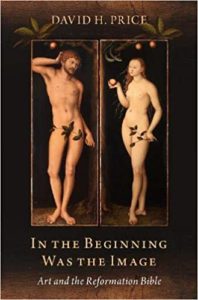
David H. Price, In the Beginning Was the Image: Art and the Reformation Bible. 2020
This pioneering study focuses on the decisive contributions of the three leading artists of the Northern Renaissance--Albrecht Dürer, Lucas Cranach the Elder, and Hans Holbein the Younger-- to the printed Bible and to the transformation of ecclesiastical art in the Protestant Reformation.
A time of artistic and theological revolution, the Renaissance and Reformation also witnessed a visual reformation of the Bible. In David H. Price's new interpretation, these artists emerge as major reformers in their own right who created a dynamic and innovative visual culture of biblicism. In the Beginning Was the Image explicitly addresses a key paradox of the Bible's new cultural status: as divergent Bible editions and translations shattered the unity of Christianity, new artistic approaches arose to accommodate theological and textual diversity. Rulers and theologians produced new Bibles as foundations for transformative socio-political movements, and their success, according to Price's compelling research, depended on the inventiveness and creativity of these artists.
Written in a style designed to be accessible to a broad range of readers, Price's richly nuanced study explores the art of Dürer, Cranach, and Holbein and the biblical iconographies they developed to connect the new biblicism to faith and political authority.

Mark Jantzen and John D. Thiesen, eds. European Mennonites and the Holocaust. 2020
During the Second World War, Mennonites in the Netherlands, Germany, occupied Poland, and Ukraine lived in communities with Jews and close to various Nazi camps and killing sites. As a result of this proximity, Mennonites were neighbors to and witnessed the destruction of European Jews. In some cases they were beneficiaries or even enablers of the Holocaust. Much of this history was forgotten after the war, as Mennonites sought to rebuild or find new homes as refugees. The result was a myth of Mennonite innocence and ignorance that connected their own suffering during the 1930s and 1940s with earlier centuries of persecution and marginalization.
European Mennonites and the Holocaust identifies a significant number of Mennonite perpetrators, along with a smaller number of Mennonites who helped Jews survive, examining the context in which they acted. In some cases, theology led them to accept or reject Nazi ideals. In others, Mennonites chose a closer embrace of German identity as a strategy to improve their standing with Germans or for material benefit.
A powerful and unflinching examination of a difficult history, European Mennonites and the Holocaust uncovers a more complete picture of Mennonite life in these years, underscoring actions that were not always innocent.
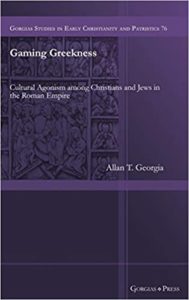
Allan T. Georgia, Gaming Greekness: Cultural Agonism among Christians and Jews in the Roman Empire. 2020
How the Jewish and Christian communities that emerged in the early Roman Empire navigated a ‘Hellenistic’ world is a longstanding and unsettled question. Recent scholarship on the intellectual cultures that developed among Greek speaking subjects of Rome in the so-called Second Sophistic as well as models for culture and competition informed by mathematical and economic game theories provide new ideas to address this question. This study offers a model for a kind of culture-making that accounts for how the cultural ecosystems of the Roman Empire enabled these religious communities to win legitimacy and build discourses of self-expression by competing on the same cultural fields as other Roman subjects. By considering a range of texts and figures—including Justin Martyr, Tatian, the ‘second’ Paul of the Acts of the Apostles, Lucian of Samosata, 4 Maccabees, and Favorinus of Arelate—this study contends that competing for legitimacy enabled those fledgling religious communities to express coherent cultural identities and secure social credibility within the complex milieu of Roman Imperial society.
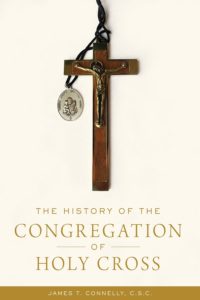
James T. Connelly, The History of the Congregation of Holy Cross. 2020
University of Notre Dame Press
In 1837, Basile Moreau, C.S.C., founded the Congregation of Holy Cross (C.S.C.), a community of Catholic priests and brothers, to minister to and educate the people of France devastated by the French Revolution. During the centuries that followed, the Congregation expanded its mission around the globe to educate and evangelize, including the establishment in 1842 of the Congregation’s first educational institution in America—the University of Notre Dame. This sweeping book, written by the skilled historian and archivist James T. Connelly, C.S.C., offers the first complete history of the Congregation, covering nearly two centuries from 1820 to 2018.
Throughout this volume, Connelly focuses on the ministry of the Congregation rather than on its ministers, although some important individuals are discussed, including Jacques-François Dujarié; Sr. Mary of the Seven Dolors, M.S.C.; André Bessette, C.S.C.; and Edward Sorin, C.S.C. Within a few short years of founding the Congregation, Moreau sent the priests, brothers, and sisters from France to Algeria, the United States, Canada, Italy, and East Bengal. Connelly chronicles in great detail the suppression of all religious orders in France in 1903 and demonstrates how the Congregation shifted its subsequent expansion efforts to North America. Numerous educational institutions, parishes, and other ministries were founded in the United States and Canada during these decades. In 1943, Holy Cross again extended its work to South America. With the most recent establishment of a religious presence in the Philippines in 2008, Holy Cross today serves in sixteen different countries on five continents. The book describes the beatification of Basil Moreau, C.S.C, on September 15, 2007, and the canonization of André Bessette, C.S.C. on October 17, 2010. The book will interest C.S.C. members and historians of Catholic history. Anyone who wants to learn about the origins of the University of Notre Dame will want to read this definitive history of the Congregation.
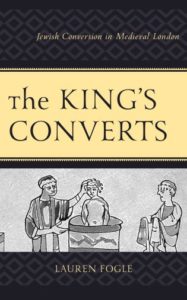
Lauren Fogle, The King’s Converts: Jewish Conversion in Medieval London. 2019
In the Middle Ages, Jews who converted to Christianity occupied a shadowy and often dangerous place between the two religions. Rejected by their former community, and sometimes not accepted fully as Christians, converts were often destitute and at the mercy of noble benefactors. Only in London was there an official, royally sanctioned and funded, policy of conversion. When Henry III founded the Domus Conversorum, in 1232, he created a unique institution, one intended to house, protect, and instruct converts from Judaism.
This book provides an analysis of Jewish conversion in England and continental Europe in the 12th and 13th centuries and offers a detailed look at London’s Domus Conversorum: its finances, its administration, and its inhabitants. Using royal records, financial accounts and receipts, Church letters and documents, London wills and assizes, and chronicles, this book presents the most in depth account of Jewish conversion in London to date.
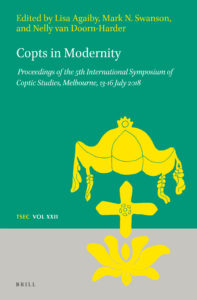
Elizabeth Agaiby, Mark N. Swanson, and Nelly van Doorn-Harder, eds. Copts in Modernity Proceedings of the 5th International Symposium of Coptic Studies, Melbourne, 13-16 July 2018. 2021
Copts in Modernity presents a collection of essays – many of which contain unpublished archival material – showcasing historical and contemporary aspects pertaining to the Coptic Orthodox Church. The volume covers three main themes: The first theme, History, gathers studies that look back to the nineteenth and late eighteenth centuries to understand the realities of the twentieth and twenty-first; the second theme, Education, Leadership and Service, explores the role of religious education in the revival of the Church and how Coptic religious principles influenced the ideas of leadership and service that resulted in the Church’s spiritual revival; and the third theme, Identity and Material Culture, draws upon a broad range of material and visual culture to exemplify the role they play in creating and recreating identities. This volume brings together the work of senior and early career scholars from Australia, Europe, Egypt, and the United States.

Nicole Archambeau, Souls Under Siege: Stories of War, Plague, and Confession in Fourteenth-Century Provence. 2021
In Souls under Siege, Nicole Archambeau explores how the inhabitants of southern France made sense of the ravages of successive waves of plague, the depredations of mercenary warfare, and the violence of royal succession during the fourteenth century. Many people, she finds, understood both plague and war as the symptoms of spiritual sicknesses caused by excessive sin, and they sought cures in confession.
Archambeau draws on a rich evidentiary base of sixty-eight narrative testimonials from the canonization inquest for Countess Delphine de Puimichel, which was held in the market town of Apt in 1363. Each witness in the proceedings had lived through the outbreaks of plague in 1348 and 1361, as well as the violence inflicted by mercenaries unemployed during truces in the Hundred Years' War. Consequently, their testimonies unexpectedly reveal the importance of faith and the role of affect in the healing of body and soul alike.
Faced with an unprecedented cascade of crises, the inhabitants of Provence relied on saints and healers, their worldview connecting earthly disease and disaster to the struggle for their eternal souls. Souls under Siege illustrates how medieval people approached sickness and uncertainty by using a variety of remedies, making clear that "healing" had multiple overlapping meanings in this historical moment.

Amy B. Voorhees, A New Christian Identity: Christian Science Origins and Experience in American Culture. 2021
The University of North Carolina Press
In this study of Christian Science and the culture in which it arose, Amy B. Voorhees emphasizes Mary Baker Eddy’s foundational religious text, Science and Health with Key to the Scriptures. Assessing the experiences of everyday adherents after Science and Health’s appearance in 1875, Voorhees shows how Christian Science developed a dialogue with both mainstream and alternative Christian theologies. Viewing God’s benevolent allness as able to heal human afflictions through prayer, Christian Science emerged as an anti-mesmeric, restorationist form of Christianity that interpreted the Bible and approached emerging modern medicine on its own terms.
Voorhees traces a surprising story of religious origins, cultural conversations, and controversies. She contextualizes Christian Science within a wide swath of cultural and religious movements, showing how Eddy and her followers interacted regularly with Baptists, Methodists, Congregationalists, Catholics, Jews, New Thought adherents, agnostics, and Theosophists. Influences flowed in both directions, but Voorhees argues that Christian Science was distinct not only organizationally, as scholars have long viewed it, but also theologically, a singular expression of Christianity engaging modernity with an innovative, healing rationale.
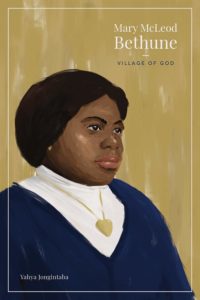
Yahya Jongintaba, Mary McLeod Bethune: Village of God. 2021
The University of Tennessee Press
Mary McLeod Bethune was born on May 10, 1875, in a log cabin in rural Sumter County, South Carolina. She was the fifteenth child among seventeen siblings but the first born free of the bonds of slavery. As a child she attended a Presbyterian mission school in nearby Mayesville and Scotia Seminary in Concord, North Carolina. After some years at Scotia she was admitted in 1894 to the Moody Bible Institute in Chicago. Her two years of training at Moody did not lead to missionary work in Africa, as she had dreamed, but to missionlike teaching positions in the South and eventually her founding, in 1904, of the Daytona Normal and Industrial Institute for Girls, in Daytona Beach, Florida. That institution would grow to the present-day Bethune-Cookman University.
In this religious biography, author Yahya Jongintaba traces Bethune’s life of service in lively prose, structuring his book in a five-part framework that organizes his subject’s life in parallel with the Lord’s Prayer and virtues identified by Bethune herself: freedom, creativity, integrity, discipline, and love. With unfettered access to Bethune’s personal archive, Jongintaba paints a picture of a mother figure and mentor to generations, a nearsaint who lived “a blameless life for four-score years.” With deep empathy and the kind of “spiritual understanding” that Bethune had despaired of finding in a biographer in her own lifetime (despite attempts by publishers and herself to find just the right person), Jongintaba endeavors to achieve in his biography what Bethune wrote that she hoped to accomplish in an autobiography that never materialized: to “give to the world the real Mary McLeod Bethune’s life as I have lived it.”

Michael Glowasky, Rhetoric and Scripture in Augustine’s Homiletic Strategy: Tracing the Narrative of Christian Maturation. 2021
In Rhetoric and Scripture in Augustine’s Homiletic Strategy, Michael Glowasky offers an account of how Augustine's pastoral concerns shape the rhetorical strategy in his Sermones ad populum. While it has been widely recognized that Augustine draws on classical rhetoric in his sermons, how his use of rhetoric in his Sermonesrelates to his pastoral theology has yet to be addressed. Through careful examination of Augustine’s preaching practice, this book provides the most comprehensive account of Augustine’s homiletic strategy in his Sermones to date. As such, it helps us better appreciate the value of the Sermones ad populum as a work in its own right, while at the same time advancing our understanding of Augustine as a preacher, teacher, and pastor.
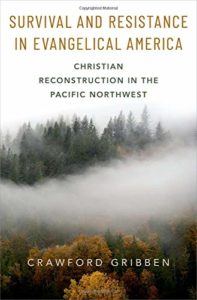
Crawford Gribben, Survival and Resistance in Evangelical America: Christian Reconstruction in the Pacific Northwest. 2021
Over the last thirty years, conservative evangelicals have been moving to the Northwest of the United States, where they hope to resist the impact of secular modernity and to survive the breakdown of society that they anticipate. These believers have often given up on the politics of the Christian Right, adopting strategies of hibernation while developing the communities and institutions from which a new America might one day emerge. Their activity coincides with the promotion by prominent survivalist authors of a program of migration to the "American Redoubt," a region encompassing Idaho, Montana, parts of eastern Washington and Oregon, and Wyoming, as a haven in which to endure hostile social change or natural disaster and in which to build a new social order. These migration movements have independent origins, but they overlap in their influences and aspirations, working in tandem to offer a vision of the present in which Christian values must be defended as American society is rebuilt according to biblical law. This book examines the origins, evolution, and cultural reach of this little-noted migration and considers what it might tell us about the future of American evangelicalism.
Drawing on Calvinist theology, the social theory of Christian Reconstruction, and libertarian politics, these believers are projecting significant soft power. Their books are promoted by leading mainstream publishers and listed as New York Times bestsellers. Their strategy is gaining momentum, making an impact in local political and economic life, while being repackaged for a wider audience in publications by a broader coalition of conservative commentators and in American mass culture. This survivalist evangelical subculture recognizes that they have lost the culture war - but another kind of conflict is beginning.
Finally, for staying up-to-date on the latest titles in all fields, we recommend regularly perusing New Books Network and its "New Books in Christian Studies” page. These pages are updated regularly.
